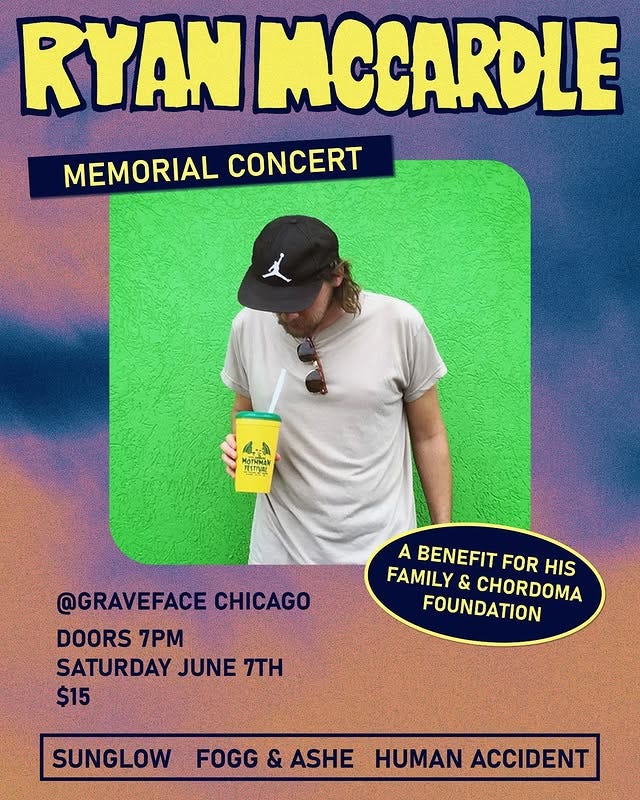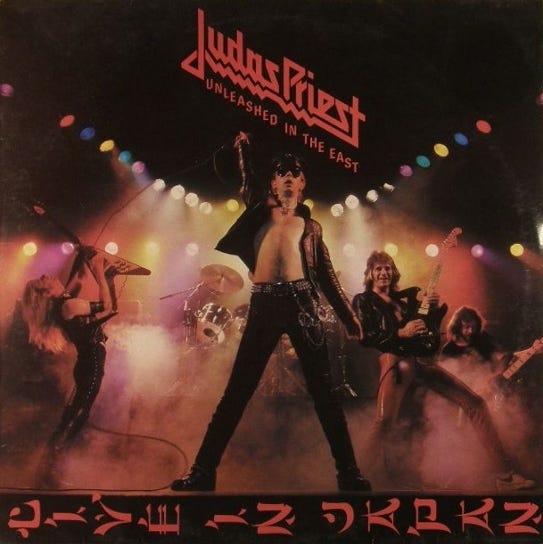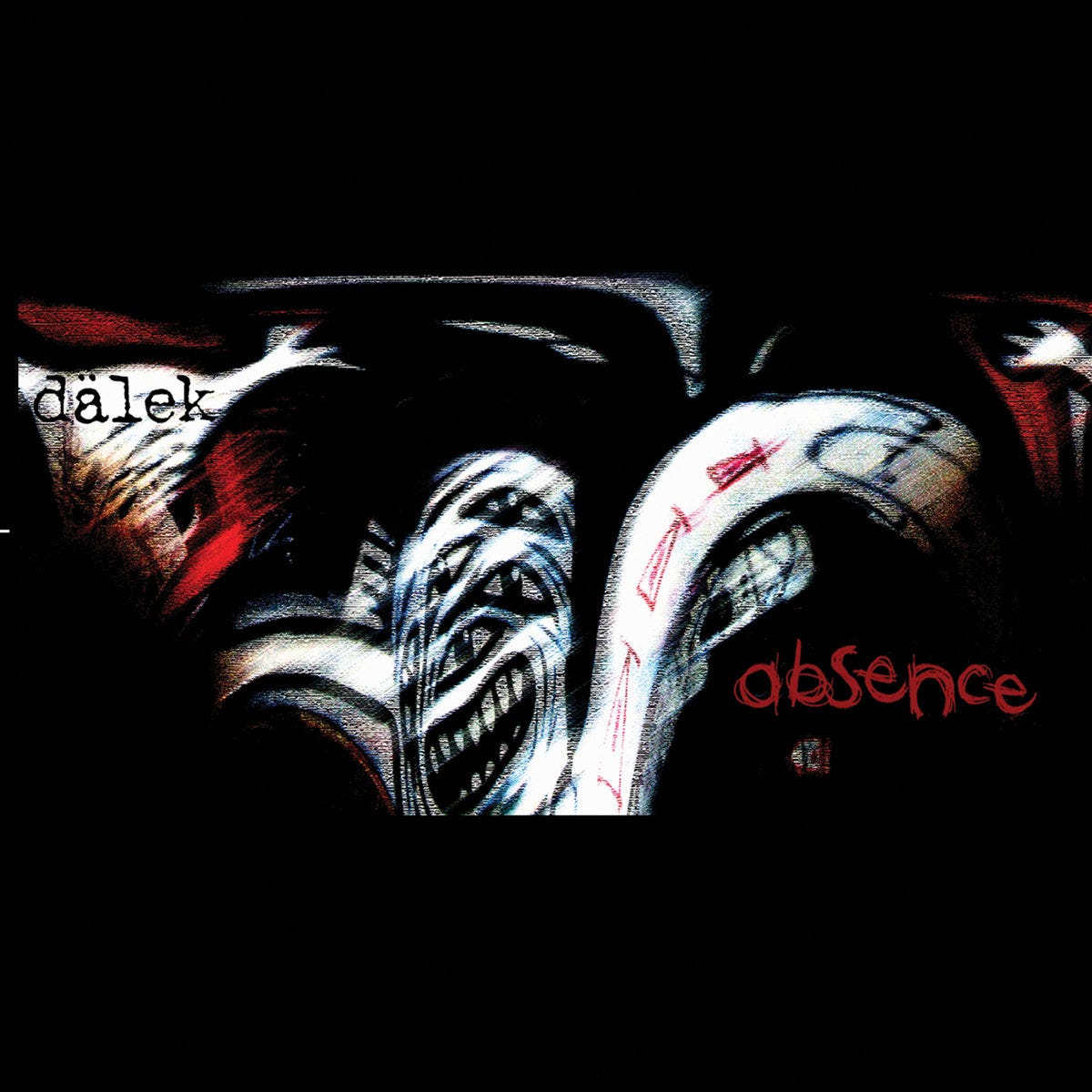As I intimated in April, I’m reverting to the most obnoxious Pynchon-pilled version of myself this year in preparation for the old guy’s forthcoming and potentially final novel this fall. To that end, after years of dragging my feet, I finally dove into Against The Day, Thomas Pynchon’s longest novel and the last on my to-read pile. Before this week I was intimidated by the length and equally hesitant out of a melancholy for coming to the end of something. Now that I know there’s another book that I can put off reading for a few more years, Against The Day doesn’t seem half as totemic. Besides, I’ve been cruising through shorter books all year, it was time to flip the calendar to Big Boy Season.
No surprise but I’m having a blast so far. Only 80 pages in and I’ve already made a habit of excitedly summarizing the book’s many digressions to ~*My Girlfriend*~ the way some of my younger drum students give me unprompted descriptions of the Dog Man movie. Instead of exclusively bothering her I’d like to bother the rest of my readers this week with some thoughts on a potent image from the book’s second chapter.
If you’ve ever heard anything concrete about the events of Against The Day you’ve probably heard of this one. The novel opens with flotilla of airships converging on Chicago for the 1893 World’s Fair. As the ship passes over the great plains of Illinois on the way to the city proper, the narrator describes watching below as cattle are gradually funneled from open farmland into stockyards, slaughterhouses, and finally distributed across the grid of the city as steaks. It is a bracing and evocative image for anyone that’s flown across the midwestern stretches of North America, one anachronistically afforded by the novel’s period-appropriate science fiction whimsy. It also recalls a similar image Pynchon included in The Crying of Lot 49 a good 40 years earlier, when the novel’s heroine views the fictional Californian city of San Narcisco from above and compares it to the insides of a computer chip. I love this pair of aerial views for a few reasons. Both descriptions, but especially Against The Day’s, literalize one of Pynchon’s pet themes, namely the way that open horizons of potential and uninhibited freedom are gradually foreclosed, rationalized and organized into systems of violent control. More importantly, that these views are seen exclusively from above suggests that it is impossible to notice these systems of control from the inside. It’s only when you zoom out with the benefit of space or time that you can see the big picture.
Pynchon isn’t the only one to compare the layout of modern metropolises to computer circuitry. This visual rhyme also underscores a significant chunk of the experimental film Koyaaniqatsi, directed by Godfrey Reggio and scored by minimalist composer and erstwhile New York City taxi driver Philip Glass. In a section titled “The Grid”, going by the track list on the commercially available versions of Glass’s score, Reggio trains his camera on streams of commuters racing in sped-up footage across intersections, punctuated by equally blistering flows of vehicles. These shots are matched with endless products rolling across conveyer belts, the flow of both consumables and consumers identical in their rapidity and endlessness. The sequence continues at this frantic pace for a good 15 minutes, matched in manic energy by Glass’s signature fast-paced arpeggios. The music never resolves, instead always pushing higher and higher with no interruption in the rush of notes. When the onslaught of light and sound finally slows, Reggio cuts to close up shots of computer chips, lingering on each one in near silence and letting the comparison speak for itself. What program exactly is the modern city meant to execute?1
Put bluntly, design determines outcome and designers are not impartial. The structure of a place has a profound impact on the shape of the lives that occupy that it. Becoming aware of those design choices, while not as simple as throwing on a pair of sunglasses, has a similarly revelatory effect as They Live’s eye-opening plot device. The first of my friends to “go woke” in college hadn’t been studying critical race theory, they had all taken classes in urban planning.
Pynchon’s choice of Chicago in Against The Day makes the book more potent for me now than if I had read it back in 2020 when I first bought it. Few cities make it easier to palpate the effect of the layout to you even on a ground level. Chicago’s persistent grid along the four cardinal directions, along with its regularly spaced alleyways give the city a “see-through” quality. Look around a corner and your view will carry along the flatland scape all the way to the end of the neighborhood. The uniform heights of the buildings make it easy to spot the skyscrapers downtown, whose looming shadows mark the outlying neighborhoods like gargantuan sundials. No matter where I am in Chicago I can picture the intersection as if from above and see an avatar of myself marking my location. No wonder my friend Greg Obis, the new owner of Chicago Mastering Service, once sang about feeling like an NPC in this city.
This grid-awareness does not vanish when I occupy my thoughts with work or my favorite distractions. As drum teacher I am a big advocate for practicing to a click track, especially for beginner and intermediate players. I always have a Logic file open on my computer during lessons so I can whip up a click track for students to drill to. Like other DAWs, Logic gives its users a visual representation of the click track with a grid running horizontally across the screen. Despite the educational and practical value of click tracks, I sometimes find myself a little conflicted about the process of chaining a beast so vigorous and lop-sided as rhythm to the cold rationality of a metronome. When I get home I turn on the NBA playoffs where the actions of two opposing teams are regimented entirely by a series of sigils painted on the court beneath their feet. Between these lines an action is a foul, outside of them it is fair play. Take a shot on the one side of an arc and it’s worth 2 points, on the other it’s worth 3. The dramatic tension of a basketball game comes as much from the struggle between the players’ individual and collaborative creativity and the geographical rules constraining them as it does from the struggle between separate teams.
This might all seem like pointless rambling, time-wasting intellectual busywork, blogging about the immortality of the crab, etc, but think about it long enough and it starts to feel a little more dire. The facial recognition technology used to monitor and police fan behavior inside Madison Square Garden during Knicks games might not be identical to the technologies used to monitor and police residents of the West Bank, but they share at least the familial similarity of first cousins. Lately I’ve found myself dwelling on the irony of the current situation in Gaza stemming from an attack on a music festival. There could not be a more fitting target to demonstrate how the technologies of crowd control can be used on one side of the wall to create a lotus bacchanal and on the other to engender new frontiers of human misery.
Despite funneling me down such dark lines of thought, Against The Day is overall a pleasant and frequently hilarious read. I don’t think the juxtaposition of tones is an accident. If anything it’s a reminder that life cannot be so cleanly boxed into distinct categories like “lighthearted fun” and “somber & serious”. The two commingle at every turn. I’ll likely report back with more thoughts on the book as I continue my slow passage across its breadth. idk, maybe we can turn it into a book club? In the meantime, let’s get to the tunes!
# # # # # The Promo Zone # # # # #
This is your last warning! On Tuesday June 3rd, Ferrn will make our live debut at The Burlington in Chicago, IL. I’ll be playing drums and wearing a tracksuit. Some other band members might also wear tracksuits. I can’t say for sure. What I can say for sure is that the band sounds great and we’re honing in a really cool mix of psychedelic indie rock, electronic production, and jazz fusion. Playing with Ferrn has made me feel way more at home musically since moving to Chicago. Come through for good tunes!
While I won’t be performing, I’d also encourage you to attend the Ryan McCardle Memorial Concert at Graveface Records in Chicago, IL on June 7th, featuring performances from Sunglow, Fogge & Ashe, and Human Accident. This concert is a fundraiser for Ryan’s family and for The Chordoma Foundation. You can find the details on the Instagram post below:
Thank you for reading this newsletter. If you’ve enjoyed it, consider becoming a paid subscriber for $5 a month, or the discounted price of $40 a year. The support of my paid subscribers makes this newsletter and much of my music possible. It does not go unappreciated. If subscribing is too big a commitment, you can also grab an album from my Bandcamp page. Even a one time purchase makes a difference!
~ ~ ~ ~ ~ Listening Diary ~ ~ ~ ~ ~
Listen to this year’s running diary on Apple Music.
“Unspoken Oath” by Ancient Death (Ego Dissolution, 2025)
Awesome drumming on this throwback death metal track. This is some proudly unquantized playing, makes me smile to hear so many ghost notes and to feel that push-and-pull as the meters change. I’ve seen this band compared to Atheist and while I don’t totally hear it, the looseness of the drums definitely recalls the fusion influenced playing of the early 90s death metal scene. It wasn’t all just Suffocation and Cannibal Corpse! If we’re trapped in revivalism let’s at least preserve the bio-diversity of that era.
“Indio” by Sharon Van Etten (Sharon Van Etten & The Attachment Theory, 2025)
~*My Girlfriend*~ saw Sharon Van Etten and her new band live the other week so I asked her to put on the latest record in the car while we took a trip to Costco. Man, Costco is a stressful place. I’m intrigued by Van Etten’s choice to shift to a band at this point of her career. Might write about it at length at some point, maybe soon. Big fan of the chorus, especially the way the vocals follow the phrasing of the guitar line instead of rounding out into more conventional melodies. Great touch on the ride cymbal, too.
“Obecanja” by Pingvinovo Potpalublje (Pingvinovo Potpalublje, 2017)
This song won major points in the Lamniformes Intramurals Music League. Shouts to Milos for submitting this post-punk gem from the former Yugoslavia. I love the way the bass takes the lead melody in the instrumental sections.
“Wet Questions” by Keziah Jones (Black Orpheus, 2003)
Check out the slick 6/4 count on this one.
“Last Chance” by Switched (Subject to Change, 2002)
Readers know I have a soft spot for truly stupid nü-metal. I am a child of my era and I cannot deny it. I have an especially soft spot for songs that try to grapple with legitimately serious emotions in a genre typically used to express little more than petulance. There’s something deeply human about that tension between style and substance. Even guys with frosted tips experience grief. Really good vocal performance and production on this song, and even the stupidest of nü-metal songs typically have great drumming.
\ \ \ \ \ Micro Reviews / / / / /
Here are five micro reviews of albums from my vast Rate Your Music catalog. Long time Lamniformes Instagram followers will recognize these from my stories, however they’ve been re-edited and spruced up with links so that you can actually hear the music instead of just taking my word for it.
Koyaanisqatsi by Philip Glass (1983) - Minimalism
In 2007 a lot of 17 year old boys got exposed to “Pruit Igoe” through the one-two punch of placements in the trailers for Grand Theft Auto 4 and the Watchmen movie. In my case this exposure was reinforced when my high school music teacher played a clip of the film Koyaanisqatsi in class. After that I caught the minimalism bug *bad*. If you’ve ever wondered why there’s so much low organ droning in my music, this is a pretty good answer. Does this score work absent its movie? If you’re a fan of arpeggios, absolutely. It’s easy to make fun of Glass because he so identifiably does One Weird Trick (Schenkerians HATE him), but when that trick works it works. Besides “Igoe”, “The Grid” is an obvious standout where it’s easiest to hear the point even without visual accompaniment. A constant stream of notes matching the blistering pace of modern life.
Scurrilous by Protest The Hero (2011) - Progressive Metal
After roaring off the tarmac with two highflying high concept records of technically acrobatic metalcore Scurrilous brought Protest The Hero back down to earth. Though no less musically verbose, the album has none of the narrative or orchestral aspirations that weighed down Fortress. Instead this is Protest The Hero’s best collection of discrete songs, with lyrics that similarly keep the focus tight on narrower topics like nicotine addiction and navigating the music industry. My favorite is the closer, which articulated the oncoming crass panopticon of the modern internet better than any of their prog contemporaries in 2011. Look, I won’t pretend that this band aren’t exhausting to many, in large part because of the musical theater/swoopy hair tendencies of their singer. If that’s turned you off in the past this album boasts significantly fewer screams, which at least dials down their hot-topicality. Can’t help you with the theatrics though, the Les Mis references are here to stay.
Unleashed in the East by Judas Priest (1979) - Heavy Metal
Less of a live document than a representation of the platonic ideal of a Judas Priest concert, this 1979 album collects some of the best songs from Priest’s early discography and presents them with more robust production, higher energy, and even higher notes from singer Rob Halford. Halford has since admitted that his vocals on this album were not from the band’s performance in Japan. He could have recorded his vocals on Mars for all I care, who cares when he sounds this good! The rest of the band sounds killer too, playing the material with an intensity that closes the gap between Priest’s early hard rock sound and the speed metal they’d go on to both inspire and emulate in the 80s. Taken as a whole the record functions both as a perfect entry point for the Priest curious and as a blueprint for classic heavy metal. If nothing else, you must hear “Victim of Changes”.
Damned Damned Damned by The Damned (1977) - Punk Rock
I am no expert on or aficionado of classic punk, and yet I’ve always had a soft spot for this debut record. Why do I like The Dammed when so many British punk acts leave me cold? idk man, i guess the drums are good? A more sincere answer is that it isn’t hard to hear a direct line from the faster tunes on this to the more modern hardcore I typically go for. Those quick numbers are broken up by longer songs that show off the band’s rock n roll swagger and a budding goth-y sense of melody that they’d develop more on later albums. You get a real sense of multiple personalities pushing and pulling the band in different directions. Great playing and great variety make this a worthwhile listen even for the non-punks among us. Also, The Stooges & Beatles covers both kick ass.
Absence by Dälek (2005) - Rap
I saw Dälek open for Isis along with Zombi back in 2006, a bill that remains my ideal for a genre agnostic show where the bands are unified by their underground ethos and experimental bent but otherwise sound nothing alike. To be fair there are few bills where Dälek’s presence wouldn’t feel a little incongruous. The group rely on an unlikely formula of politically charged NYC underground rap with production indebted to trip-hop, industrial, and shoegaze. The beats are loud, droning, and often quite pretty once you learn to hear past the dense sheets of distortion. The beats are so loud in fact that you often can’t make out what MC Dälek is going on about. This might seem like an odd quality for a rap record but I think it serves a thematic purpose. First, it forces us to really pay attention if we want to follow along. Second, the noise acts as signal interference, warding off any ears that might not take kindly to the anti-capitalist, anti-religious bent in the lyrics. This is music for a self-selecting audience of “real” fans. It is not a fun time, and it goes on a little long, but as a testament to hip-hop’s sonic range and radical ethos it is well worth a listen.
I thought about writing about the sequence in Alan Moore’s From Hell where Jack the Ripper draws a pentagram across London by way of a carriage ride, but it’s been too long since I’ve read the book and I don’t want to misremember any details. Nonetheless, it feels relevant.










